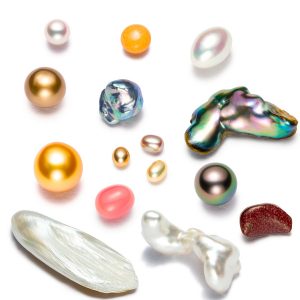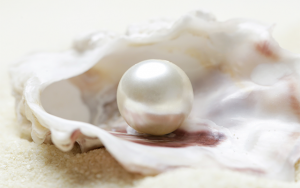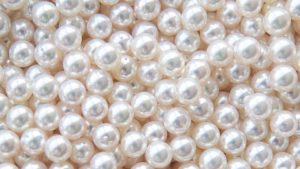Pearls are formed as a result of an immune response inside the shell of certain mollusks, which serves as a defense mechanism against a potential threat, such as a parasite or an outside threat which might injure the mantle tissue. A tiny piece of mantle tissue from a donor shell is being transplanted into the recipient shell, which causes the formation of a pearl sac, where the tissue deposits calcium carbonate. Pearls are considered a feminine piece of jewelry and are being associated with the Moon and the planet Venus.


Size
It is primarily described in terms of pearls’ size in millimeters, rather than their weight. The larger the size, the higher the price but, when it comes to pearl sizes, the price jumps might be uneven. Once the size reaches the scale of 8-9mm for the diameter and above, the prices tend to increase much more in comparison to the lower diameter ranges.
Shape
Pearls can come in round and oval shapes, they could be pear-shaped or even misshapen. The latter ones go by the name of “baroque pearls”. Symmetrical spheres or symmetrical drops are among the most valuable shapes. Pearl sizes typically range between 2 mm and 16 mm in diameter and this size solely depends on the type of mollusk that they form in.

Clarity
A good quality in terms of clarity would mean the pearls come with the characteristic pearly luster and there are sharp and bright reflections on their surface. They would be smooth and blemish-free and a suitable layer of nacre would be present, to increase durability.
Color
Pearls come in various colors, from white all the way to black. The natural color however, results from a combination of several factors, such as the predominant basic color of the pearl, the one or more colors overtitling the body color, and also, the play of lustrous colors. These latter ones could be a subtle combination of colors such as pink, green, blue or even silver and they would change once you move the pearls in your hand.
